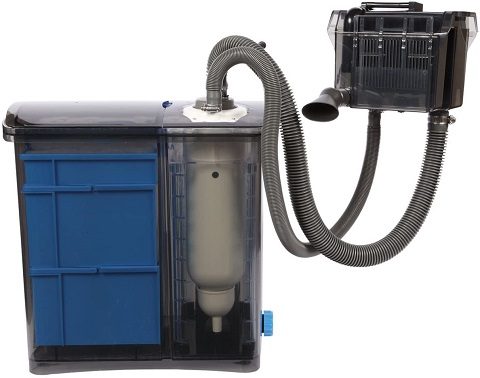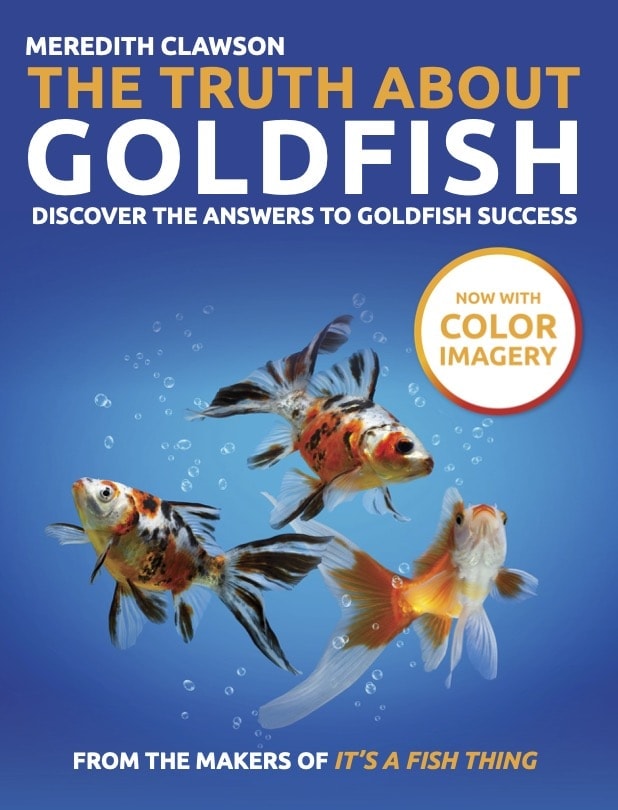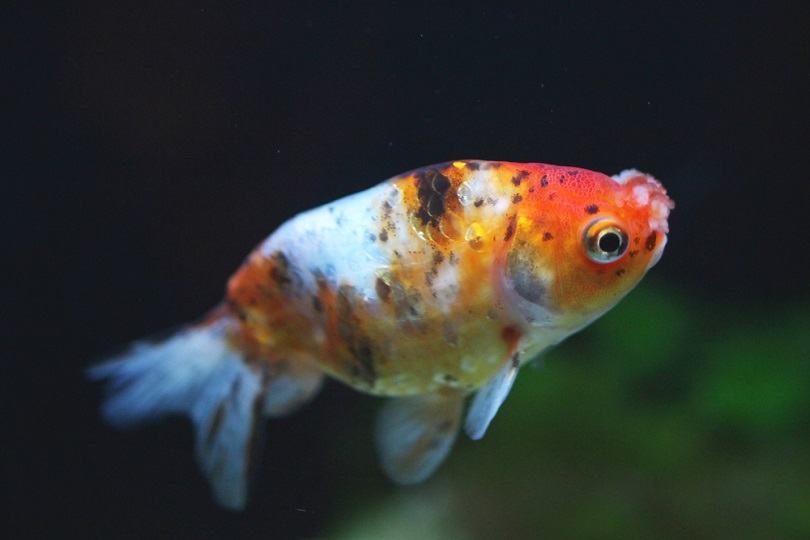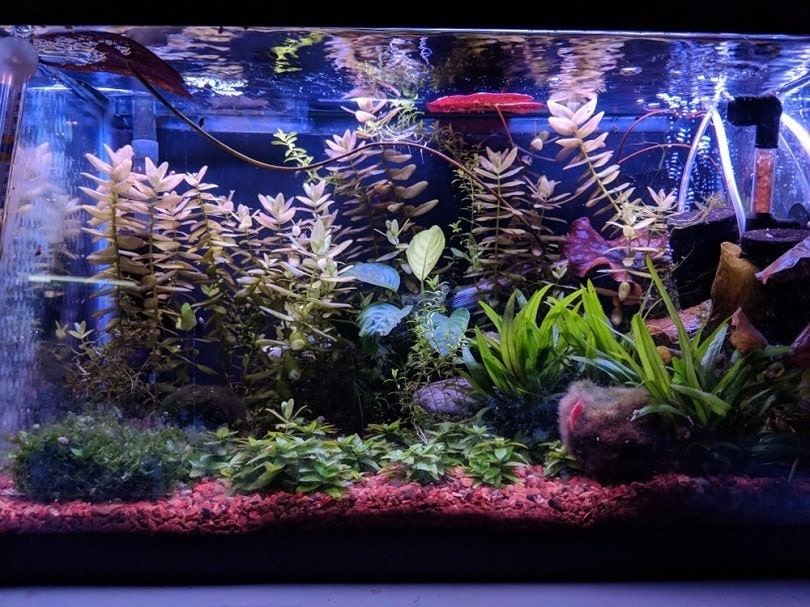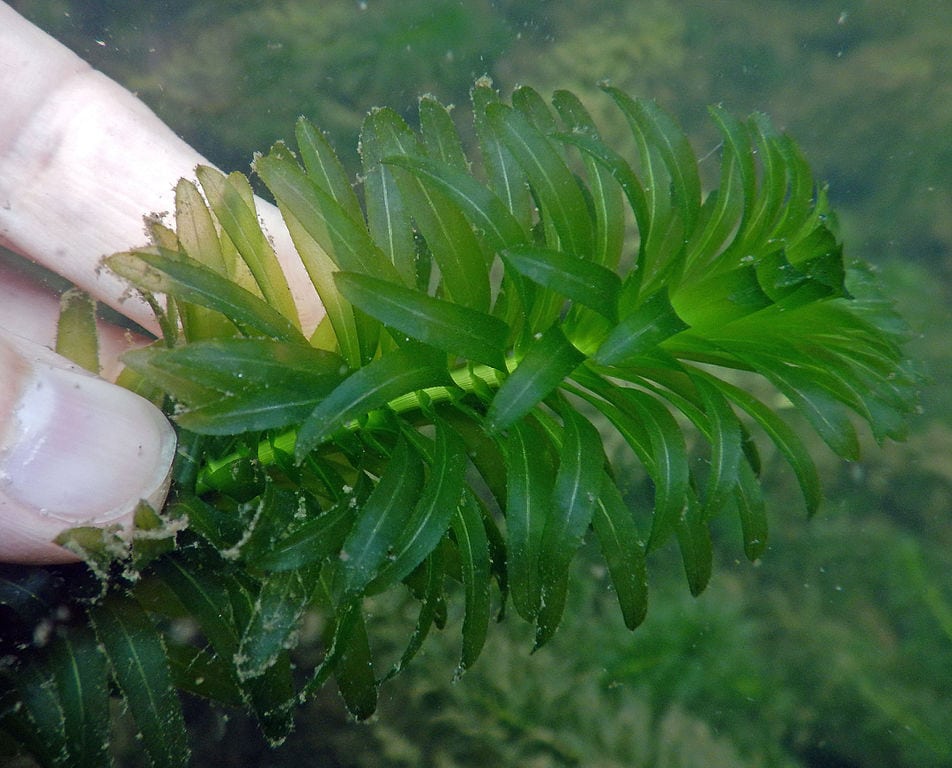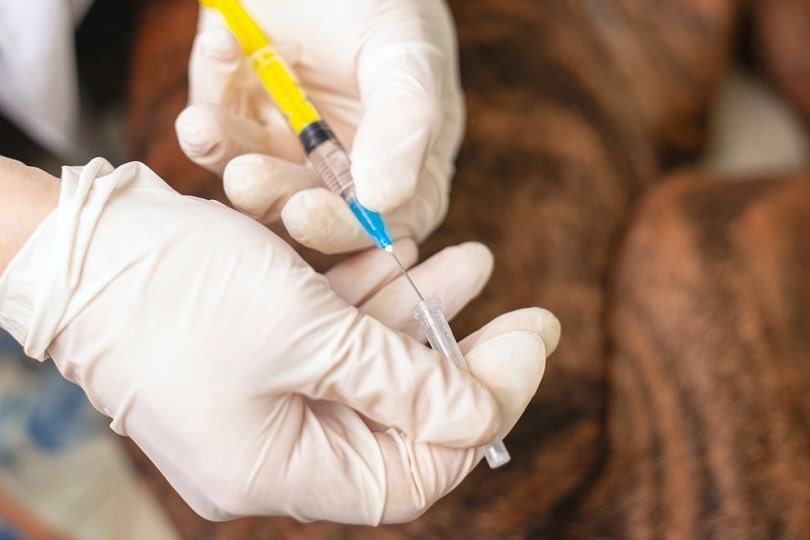5 Best Goldfish Filters for Your Tank in 2024 – Reviews & Buyers Guide

Updated on
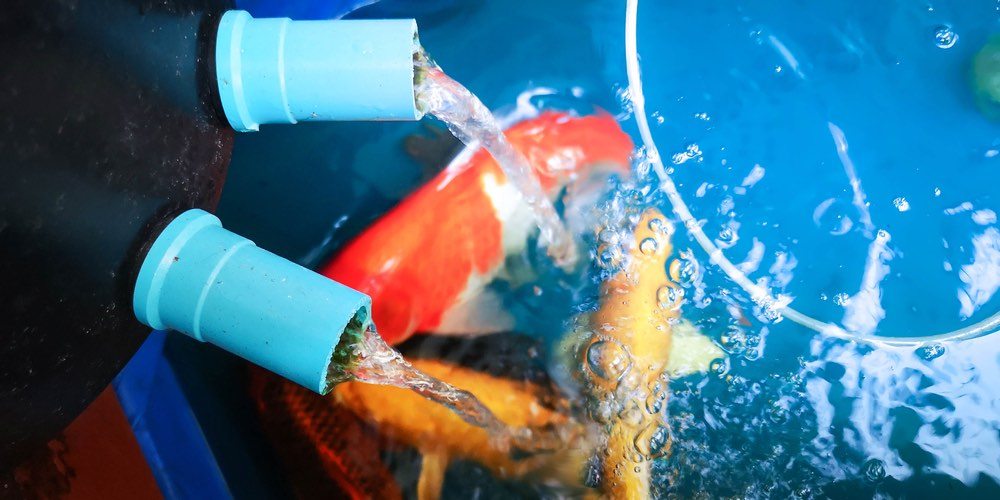
The type of goldfish filter you choose can make or break your success with fishkeeping. It stabilizes your entire aquarium environment, keeping your goldfish safe.
A decent filter is better than nothing and will save you some work, but an excellent filter will drastically reduce the number of water changes you need to make and maximize your stocking capacity.
That’s why I’ve compiled a list of the 5 best filters in various sizes, shapes, and budgets, with detailed reviews.
A Quick Comparison of Our Favorites in 2024
| Rating | Image | Product | Details | |
|---|---|---|---|---|
| Best Overall |

|
MarineLand Penguin 100 Power Filter |
|
Check Price |

|
Fluval Performance Canister Filter |
|
Check Price | |

|
Kollercraft TOM RP90 Rapids Pro Filter with UV Sterilizer |
|
Check Price | |

|
Lee’s Premium Undergravel Filter |
|
Check Price | |

|
Hygger Aquarium Double Sponge Filter |
|
Check Price |
The 5 Best Goldfish Tank Filters
1. MarineLand Penguin 100 Power Filter
The MarineLand Penguin filter is a hang-on-back, or HOB, filter. It hangs on the back of the tank, stays out of the way, and does not take up much space in the tank.
Sometimes, HOB filters can be loud, but this filter runs quietly with only a gentle hum. It allows for mechanical, biological, and chemical filtration for the tank. The water is pulled from the tank into a chamber, where it is then passed through filter media before re-entering the tank.
The water goes through floss filter media, which is the mechanical filtration. It is passed through activated carbon within the filter cartridge, which is the chemical filtration. The activated carbon helps to draw impurities and toxins, like ammonia and nitrate, from the water.
The MarineLand Penguin has a patented BIO-wheel that houses beneficial bacteria needed to keep tanks clean and healthy, which is the biological part of the filtration system. The BIO-wheel is made with surface area in mind, which allows for more beneficial bacterial growth. It also spins gently, creating a pleasant sound of running water as the water re-enters the tank.
The suction produced by this tank is gentle and should not harm most fish or invertebrates, but small fry or shrimplets may get sucked into it without an external sponge filter.
- Doesn’t take up much tank space
- Runs quietly
- Three-stage filtration
- BIO-wheel provides large surface area for beneficial bacteria colonies
- Creates a pleasant running water sound
- Intake should not harm most fish and invertebrates
- Four sizes up to 75 gallons
- Running water sound may be bothersome to some
- Shrimplets and fry may be pulled onto the filter intake
2. Fluval Performance Canister Filter
Canister filters are ideal for heavily stocked or high-volume tanks. They need to sit below the level of the tank since the water will be pulled down from the tank and flushed through the filter before being pumped back into the tank. This feature allows for the filter to be hidden from view, and it won’t take away from the aesthetic of the tank.
The Fluval Performance canister filter functions best with a sponge filter on the intake to catch large particles in the water. It’s easier to clean when the time comes and helps protect small tank residents, like fry, from being sucked into the filter.
Like HOB filters, this filter provides mechanical, chemical, and biological filtration. A bonus is that the large size allows the filter to be packed with bioballs or ceramic rings to encourage the growth of good bacteria.
The newest version of Fluval’s Performance canister filter has been made quieter by 25%, and it won’t stress fish or create excessive noise. Manual pumping is required to start the filter, but once it has been done, it should not be done again unless the filter is turned off. The Fluval Performance filter is energy efficient and has a minor impact on energy costs.
- Great option for overstocked tanks
- Can be hidden in a cabinet
- Three-stage filtration
- Filter media is customizable
- 25% quieter than previous models
- Energy efficient
- Four sizes up to 125 gallons
- Must sit below the level of the tank
- Manual pump for startup
- Shrimplets and fry may be pulled onto the filter intake
3. Kollercraft TOM RP90 Rapids Pro Filter with UV Sterilizer
This is a wet/dry filter, also known as a sump. It is similar to canister filters in that the filter media can be chosen at the owner’s preference, so bioballs, ceramic rings, or something else can be used. These filters are powerful and are the best option for overstocked tanks. The Kollercraft Rapids Pro filter returns oxygen-rich water to the tank and removes ammonia and nitrate.
The pump is so powerful that it may reduce the need for water changes, even in overstocked tanks. The Kollercraft 393ac4 Pro is suitable for freshwater and saltwater aquariums and does not strain energy resources. It comes with the added bonus of a UV sterilizer, which can decrease green algae in the water and kill parasites.
Be aware that UV sterilizers may need to be turned off when using certain medications or chemicals in tanks.
- Filter media is customizable
- Best option for overstocked tanks
- Oxygenates tank water effectively
- May reduce frequency of water changes
- Includes UV sterilizer
- Energy efficient
- Wet/dry pumps may be confusing to set up
- Only one size up to 90 gallons available
- UV sterilizer cannot be used in conjunction with some medications
4. Lee’s Premium Undergravel Filter
Undergravel filters are useful in goldfish tanks because they provide surface area for beneficial bacteria and filter waste. While gravel is not recommended for goldfish, undergravel filters can be used with pebbles, bio growth clay pebbles, or even sand. A powerhead pump can be paired with an undergravel filter to reverse the water flow, allowing for the addition of a pre-filter sponge to catch large debris.
- Has large surface area for beneficial bacteria colonies
- Can be used with various substrate types
- Can be paired with a powerhead to collect large debris
- Three sizes up to 65 gallons available
- Offers no chemical and minimal mechanical filtration
- Best when used in conjunction with another pump or filter type
- Cannot be used in bare-bottom tanks
If you're a new or even experienced goldfish owner who is having issues understanding the intricacies of water filtration, or just wants a bit more detailed information on it, we recommend that you check out our best-selling book, The Truth About Goldfish.
It covers everything about creating the most ideal tank setup and more!
5. Hygger Aquarium Double Sponge Filter
Sponge filters are excellent on their own but can also be a great addition to other filters. Sponge filters sit in the water at the intake, catch large debris, and ensure small fry, shrimplets, and sick or weakened fish do not get sucked into the filter. In fact, they are a good option for quarantine and nursery tanks.
The Hygger Double Sponge filter has two sponges that water passes through. The water then passes over ceramic balls, which allows for the growth of beneficial bacteria. They are not the best option for large or overstocked tanks unless added to another type of filter.
- Safe for shrimplets and fry
- May help reduce debris in the water
- Has large surface area for beneficial bacteria colonies
- Best option for quarantine and nursery tanks
- Best when used in conjunction with another filter type
- Not a good option for large or overstocked tanks
- Offers no chemical and minimal mechanical filtration
- Only available in two sizes up to 55 gallons
Do Goldfish Need a Filter?
The truth is, goldfish need to have a filter, and you need to have one for your own sake. Goldfish produce toxins (through their waste and respiration) that accumulate in the aquarium and can cause all kinds of major problems.
The purpose of a filter is to supply a multi-pronged approach to get rid of the nasty toxins and keep your goldfish safe using a combination of mechanical, biological, and sometimes chemical filtration. Theoretically, goldfish could live without a filter on one condition: Huge daily water changes.
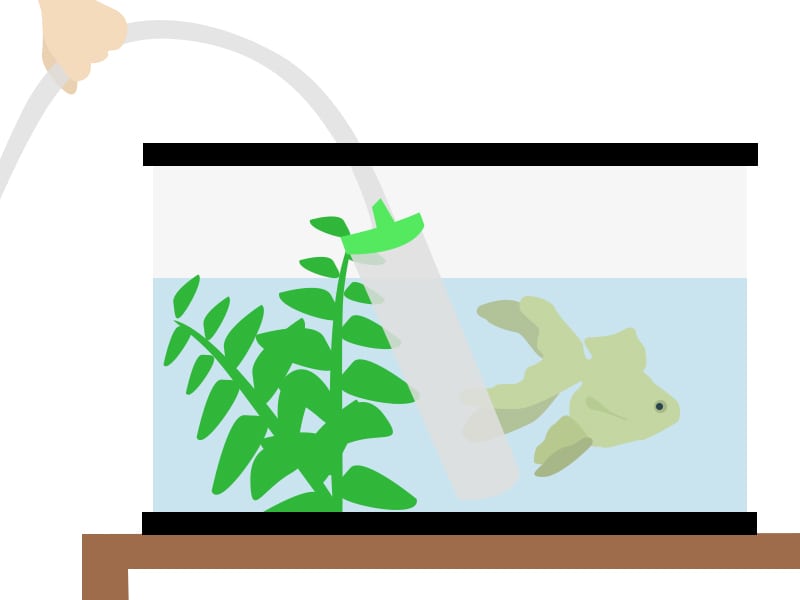
Those would effectively remove the toxins and keep the water safe for our finned friends, but it isn’t practical for most people to do this for their aquariums! We have things to do besides carrying buckets all the time and paying a massive water bill.
Filtration stands in the gap between a dirty tank and going crazy with water changes. It’s the missing link!
What kind of Filtration is Best for Goldfish?
“Think of your goldfish filter as a mini sewage treatment plant.” – Goldfish keeper
There are 3 things to consider when picking out the best filter specifically for your goldfish.
1. Current
Common filter options like hang-on-back filters and canister filters hold less media. That’s why filter manufacturers brag about having a high volume of water flowing through their filters because, without it, there isn’t enough oxygen to keep the bacteria alive.
While athletic breeds like Common and Comet goldfish don’t mind current, fancy goldfish don’t like a strong current in the water. Their fins are longer and catch the water current, blowing them around the tank or causing them to struggle to stay in place.
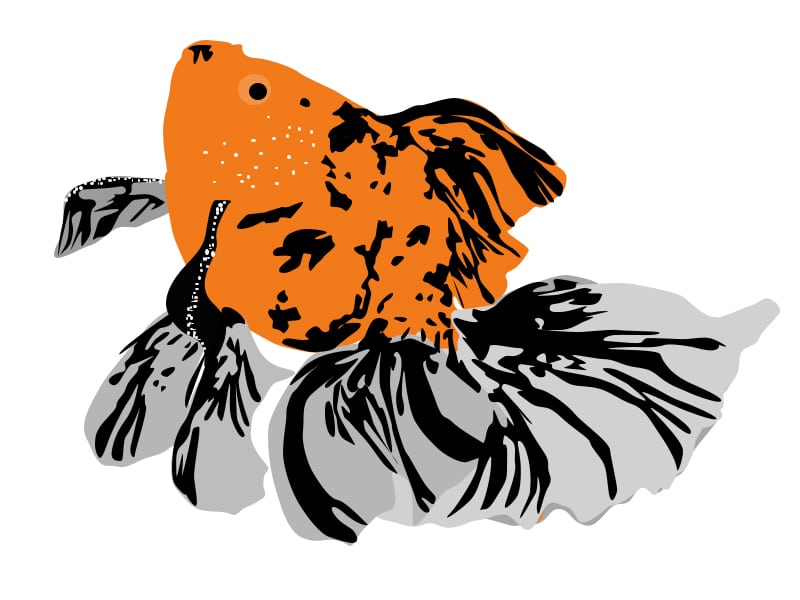
Sometimes, they give up the fight and hang in a corner or sit at the bottom. This STRESSES the fish, which weakens their immune system. A weakened immune system can lead to infections and disease.
2. Safety
Many filters are designed so that they require frequent cleaning to stay clear of debris. If debris is allowed to build up in a filter, in certain conditions, it can become incredibly toxic. Mulm (white gunky gross buildup) and sludge (brown gunky gross buildup) stress the immune system as they become loaded with bad bacteria, leading to sick fish.

3. Effective
Filtration is more than just trapping particles of fish feces or having clear water (though those are nice). Filtration is about eliminating ammonia (the world’s #1 killer of aquarium fish) and nitrite, turning it into a much safer nitrate.
To get rid of ammonia, you need beneficial bacteria that consume it and turn it into a far less harmful substance. A good filter has to have lots of room for beneficial bacteria to grow, or they can’t do their job.
Most filters on the market are too small to be effective for our “messy goldies.” They lead to a false sense of security for the hobbyist. So, choose one of the high-performing brands above for the best results.
Filtration Conclusions
The kind of filtration you choose depends on your lifestyle, the type of fish you own, and the needs of your aquarium. There is a trade-off with the more discreet filtration systems since they’re not as efficient or safe for the fish, and the more powerful ones are more expensive or visible.
What is best for your pets? Ultimately, a healthy, well-filtered aquarium will support healthy, happy goldfish and save you extra work.
What Do You Think?
Do you wonder if your goldfish have enough filtration to balance out your water changes? Do you have a question about how a filter works or a preference for your tank?
Then, please leave your comment below.
Read More: Do Goldfish Need a Filter?
Featured Image Credit: CAT Foto, Shutterstock






